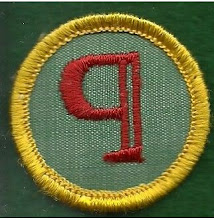How far would we go, as writers and editors, to have a mega-best-seller?
Sybil Exposed by Debbie Nathan came out in 2011 and it finally floated to the top of the stack of reading. I was fascinated with the story because it is the story of a writer, Flora Rheta Schreiber, who despite having serious doubts about her subject matter, wrote a best seller. She was goaded on by psychiatrist Dr. Connie Wilbur, who was trying to make her name diagnosing and curing patients of multiple personalities.
Shirley Mason, the real Sybil, was dependent on Dr. Wilbur and Dr. Wilbur on Shirley. And Dr. Wilbur and Shirley Mason depended on Flora Rheta Schreiber to tell their story. The relationship between psychiatrist and patient -- and Shirley Mason's awareness that she was faking it to make her psychiatrist happy -- is summed up in an article on the PsychCentral web site.
But what of the WRITER? Flora Rheta Schreiber was the psychiatry editor of Science Digest when she heard about Shirley Mason, a patient of Dr. Connie Wilbur. Debbie Nathan writes that Schreiber was influenced by Truman Capote's In Cold Blood -- a "non-fiction novel" -- a serious work.
Schreiber had a startling true story and two compelling protagonists, a troubled woman and a caring psychiatrist. But who was the antagonist? The multiple personalities? Shirley Mason's mother became the antagonist, a crazy woman, sexually abusing her daughter, fragmenting "Sybil" into multiple personalities. Presto, there's the arc of action: young woman, horribly abused, fractures into sixteen distinct personalities, but with therapy from a caring psychiatrist, "re-integrates" all her personalities into one and lives happily ever after.
It would have made a great work of non-fiction, a case study with composite characters and events; even if Dr. Connie Wilbur was there as herself. But Sybil was presented as non-fiction, the truth, no composite characters (a claim changed with a subsequent edition) and barely-disguised real names--and it was a huge hit, on the New York Times best seller list, seven million copies sold. Almost immediately readers who knew Shirley had guessed "Sybil's" real identity.
Nathan states that Schreiber had received a sizable advance and was under pressure from Dr. Wilbur to publish. Nathan states that Schreiber had her doubts and considered withdrawing from the project, but pressed on, looking for the best-seller, and she got it. In doing so Dr. Wilbur, Shirley Mason and Flora Schreiber became "Sybil Inc." -- a real entity, designed to mine the Sybil story. A "Sybil" musical? A board game?
And what of the EDITOR? I would have been very dubious if asked to edit the manuscript as non-fiction. Sixteen personalities? Has anyone checked the facts? Could "Sybil" really have been present at the real events she's described? Are some of these events made up? Why was "Sybil" taking a cornucopia of mind-bending drugs? Wouldn't they affect what you believed you saw or what you said?
But I also admit I am coming from a 2012 perspective, after working on stories like the"satanic ritual" daycare cases -- where the "confessions" of children were coerced. (The full story of one case can be found in Frontline: Innocence Lost, which aired on PBS in 1991, 1993 and 1997. )
After "Sybil", Nathan writes that Schreiber was compelled to write another non-fiction novel. She published The Shoemaker: Anatomy of a Psychiatric in 1983; it made the best seller list, but not for long and was generally deemed a flop.
Nathan writes, "It was one thing to promote the illness of 'Sybil'... who would not have harmed a flea. It was quite another to make a victim-hero of the infamous Joe Kallinger, who... was a murderer." (page 206) Flora had become very friendly with Joe Kallinger and called him "Boomy Bum Boo" (page 205) -- and the families of his victims pressed charges against Schrieber.
How far would you go as a writer or editor to create that best seller?
___________________
Sybil by Flora Rheta Schreiber

No comments:
Post a Comment